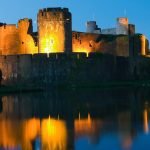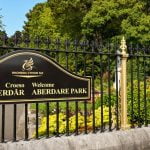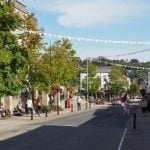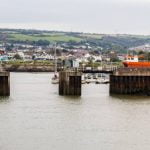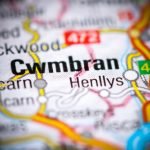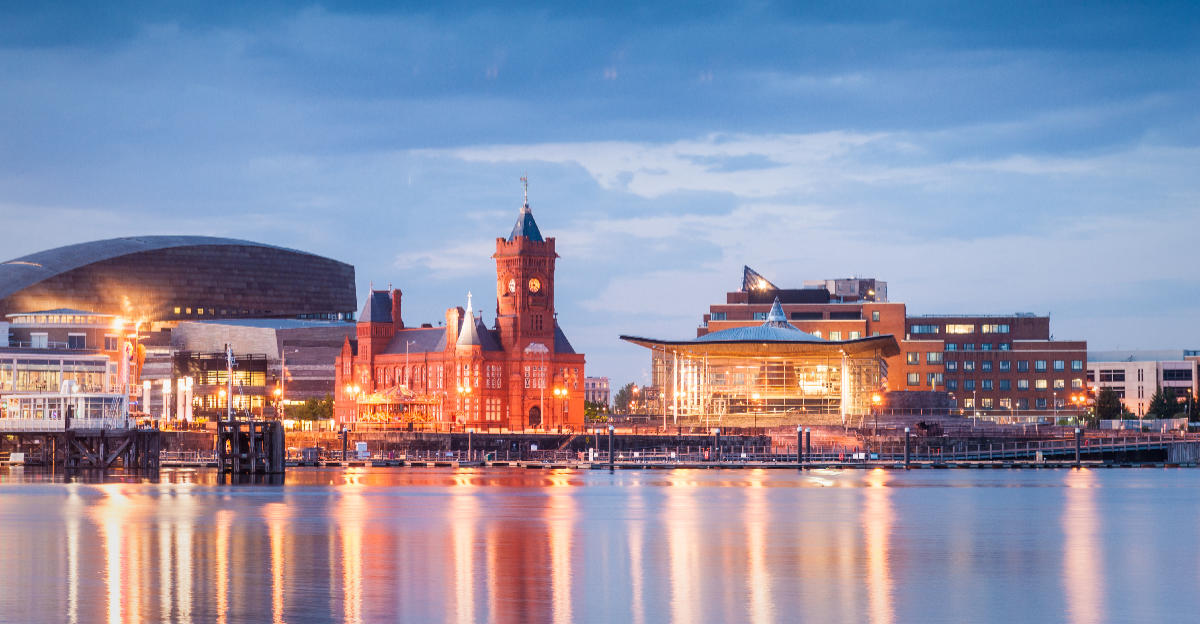
Welcome to our whistlestop tour of Cardiff the Capital of Wales and not surprisingly the biggest city in South Glamorgan. Famed for its FA Cup Winning football team Cardiff City and home to a luxurious waterfront known as Mermaid Quay. The place where the well-heeled locals come to relax and the ideal place for your staycation visit, with its chic restaurants, waterside cafés, and shops.
However no matter how amazing and well-loved this part of the city, there is much more to see in the 11th largest city in the UK. Something we plan to address in our Five Minutes Spare Guide. But before we get stuck into the good bits, let us tell you a bit about how the fine city of Cardiff came about.
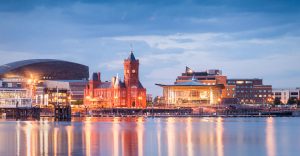
Image: Matthew Dixon/Shutterstock.com
History of Cardiff
Cardiff was once a Roman fort. When the Romans invaded Wales in approximately 50 AD, they eventually built a fort where the city stands today. This fort was knocked down, rebuilt, and strengthened between the 1st and 3rd centuries. Towards the end of the 3rd century, the fort was abandoned.
In the Middle Ages, Robert Fitz Hamon conquered the area and built his own castle inside the boundaries of the old fort. Though the castle was originally built in wood, it was rebuilt in stone later on. A town grew around the castle; though it was small, as towns of that time often were.
Like many other villages and towns during the Middle Ages, also held weekly markets. Following the year 1340, there were also two yearly fairs that lasted two weeks at a time. There were plenty of craftsmen, bakers, brewers, and more. Each of these professionals kept the markets busy and kept Cardiff running during the year.
In the 16th century, Cardiff remained a quiet town, despite the prevalent piracy that wouldn’t be suppressed until the next century. In the 16th and 17th centuries, most of the foreign trade of Cardiff was with France and the Channel Islands, but there was also a thriving coastal trade. However, in 1607 Cardiff suffered a severe flood, and then in 1642 came civil war.
It wasn’t until after 1648 that Cardiff returned to its more peaceful nature as a port town, simply trading and being traded with.
The Industrial Revolution Reaches Cardiff
After the Industrial Revolution, Cardiff began to grow at a phenomenal pace. In 1801 the population was less than 1,900. By 1900 the population was over 160,000. Many improvements to Cardiff were made in the 19th century; including gas street lighting, a covered market, a new Town Hall, a Coal and Shipping Exchange, and the Pier Head Building. As if that wasn’t enough for that century, the Royal Arcade was built in Cardiff in 1856, then the Castle Arcade was built in 1887.
Despite all of these improvements, like all towns in the 19th century, Cardiff was overcrowded and quite dirty. Disease was everywhere and almost 400 people died in a cholera epidemic during 1849. Thankfully, sewers were built, and the town eventually gained a pure piped water supply and an infirmary.
Education bloomed in the 19th century, as well. The first public library in Cardiff opened in 1861 and the University of South Wales was founded in 1893. It truly was a century of developments for this Welsh town. These developments didn’t stop either; the 20th century brought even more constructs with it.
However, the 20th century was also filled with war and destruction. The Second World War killed 355 people in Cardiff alone. In 1945, after the war had ended, Cardiff began to rebuild. And then, in 1955, Cardiff was announced the capital of Wales. More leisure buildings were built – like the National Ice Rink, the Millennium Stadium, and various shopping centres.
This century, Cardiff is positively flourishing. A city with plenty of attractions to attract tourism. There’s even a museum, dedicated to the story of Cardiff, which runs out of a Grade II listed building (one that used to be a library).
Any Famous People From Cardiff?
Loads! In fact far too many to mention in a five-minute guide, however here are a few to get you started:
Artists & Writers:
Roald Dahl was born in Llandaff which is now part of Cardiff. His work should need no introduction but in the unlikely event he was not part of your childhood reading then may we suggest you pick a few up as they are great fun for any age. If you are more of a movie buff then Charlie & the Chocolate Factory & the BFG are great family films.
Sculptor Laura Ford was born here before going on to study at the Bath School of Art. She had her first outdoor commission from West Bromwich in 1990 and since has major pieces in a number of towns and cities as far afield as Sweden & Canada. You can see some of her work here
Entertainers
Actor Peter Wingfield who is probably best known for his role as Dan Clifford in British Hospital Drama Holby City. However, he is ultra-versatile in his roles and has appeared in the 2004 Catwoman movie, as Methos in Highlander 5, and in a host of TV dramas including the hugely under-appreciated Canadian Sci-Fi series Sanctuary.
Dr Who fans will recognise Terry Nation inventor of the most feared villain of the series The Daleks – Who can forget their chilling machine voiced phrase “Exterminate Exterminate”!
After that, we need something lighter and who better than comedian extraordinaire Griffith Rhys Jones OBE who sprung to notice working with Mel Smith on Alas Smith & Jones.
Musicians
Dame Shirley Bassey probably the most Iconic singer ever to do a James Bond theme song was Cardiff born and began singing in the local clubs & pubs. She was much more than this though having a string of hit studio albums and a couple of No One singles in the late 1950s and early 1960s. She also frequently appeared on stage and on TV. Below she is performing Gold Finger which still pricks the hairs on our necks!
Classical Musician
Classical music singer Charlotte Church has since taken over the mantle of Cardiffs best Voice and she is multilingual lyrically often singing in English Welsh Latin French & Italian. Some skill set given I struggle to sing in Scottish! We couldn’t resist showing you her talent singing the moving “Men of Harlech” which has never sounded better, although its stirring rendition before the final battle in the movie “Zulu” still gets us too!
Footballers
Some of the best teams England has ever produced included Welsh players and in the following instances ones born in Cardiff:
John Toshack was a key part of the great Liverpool team of the 1970s who won the 1st Division title three times and the FA Cup in 1974.
Terry Yorath played for Leeds United between 1967 & 1976 and was a key part of their 1st Division title-winning squad in 1973-4
Ryan Giggs was a key player in the Manchester United team which dominated much of the 1990s and much of the early part of the 21st century. Thirteen League Titles four FA Cups and Two Champions leagues pretty much sum it up. Plus he was both player and young player of the year in 1992-93!!
What to do in Cardiff
The Cardiff Story Museum, it’s a wonderful place to start your Cardiff visit! This museum exhibits the history of the city and originally opened on the 1st of April 2011. At the time of writing entrance to this wonderful facility is completely free, although leaving a small donation would be appreciated. The heritage museum has a collection of 3,000 objects and artefacts, many of which have been donated from Cardiff’s own residents and communities.
If museums aren’t your thing, there are plenty of other activities in this Welsh city for you to enjoy.
Shopping
There are several top places to do your shopping in Cardiff. The Cardiff Indoor Market is favoured by locals and visitors for its range of stalls and stores that offer just about everything. Visit the pet store on the upper floor if you fancy going home with a new goldfish, or just want to take a treat back for your pet. There are, of course, fruit and vegetable stalls, too. As well as vintage stores, a Cheese Pantry, and a fresh fish stall.
For a bright and modern shopping experience, take a stroll down to St. David’s Shopping Centre. This shopping centre is the 9th largest shopping centre in the UK, and its home to Apple, H&M, and many other recognisable brand names. The first John Lewis store in Wales opened in St. David’s Shopping Centre, and there are also plenty of eateries to choose from.
Still not convinced that Cardiff’s shopping scene can excite you? How about a visit to the Cardiff Indoor Flea Market? Vintage furniture, bicycles, clothing, old clocks, retro computers – Cardiff Indoor Flea Market has it all!
The Castle Arcade is another great place to shop. This area was built back in 1885, and can be found in the Castle Quarter (which is also home to the High Street and Duke Street arcades). There is a plethora of shops in Castle Arcade; including bookshops, cheese shops, coffee shops, and bespoke clothes shops. Many agree that the Arcade is one of the most important parts of the city because it highlights the atmosphere of Cardiff and the city’s history.
Food and Drink
Cardiff has a bunch of places that will happily serve you unique and comforting food. Depending on the kind of dining experience you’re after, you’ll be able to come across a few different places that fit the bill.
For fine dining with an interesting twist, hit up The Clink; this restaurant is staffed by prisoners that are being trained in the hospitality industry so that they can have a career path and work experience when they’re released. It’s a great organisation, and the food is a treat to eat. The restaurant is run by a charity of the same name.
A combination of Welsh and French cuisine awaits you at Bully’s. This local favourite is a restaurant that has great décor and even better food. Plus, they serve lunch several times a week and not just dinner; making them a perfect place to stop on a day trip.
Not one for fancy restaurants and booking tables? The Plymouth Arms is a modern pub that can be found right next to the St. Fagans Natural Museum of History. This pub is delightful, and a great place to stop for a couple of hours if you’re looking for a break in your Cardiff trip.
Music and Entertainment
Cardiff is full of entertainment. While everyone enjoys a pint, many also enjoy a little bit of live entertainment and music with their drink. Cardiff has many such places! Located on Church Street, you’ll find 10 Feet Tall, a huge bar with DJs, magicians, and musicians. There’s also Tiger Tiger for a quirky light-up dancefloor and even quirkier cocktails, or The Flora for a cute beer garden and live music.
Art and drama can be found at the Chapter, an art venue that was established back in 1972. This wonderful blue building hosts workshops and art events, as well as alternative theatre performances and dance performances.
For something a little different, Chance & Counters is Cardiff’s own boardgame café. There are over 500 games to choose from, and lots of knowledgeable gamers around to help you find your feet.
Or head over to Cardiff City Stadium and sit in one of their 33,300 seats to watch any number of football matches that take place over the course of the year.
Travelling in Cardiff
Cardiff is actually a pretty compact city; one that can be easily explored on foot, should you choose to. Thankfully, Cardiff Central is a well-connected train station that is a stop on many major lines that head towards Wales. Trains to and from major Welsh stations start very early in the morning, too!
But while you’re in the city, you may not want to travel on foot for the duration of your stay. You can travel by bus, bicycle, car, and even boat to many places in and around Cardiff. The bus network in Cardiff is extensive, with local bus routes going to Penarth and Barry, as well as around the city. The T9 runs between Cardiff city and Cardiff Airport, just in case you’re coming by plane and not by train.
Speaking of trains again, regular trains run from Cardiff’s Queen Street station to Cardiff Bay and Cardiff city stops – such as Cathays, Ninian Park, and Llandaff North. Trains from Cardiff Central link to the Valleys and Vale of Glamorgan, and there are also trains to other major cities in the UK – including a high speed to London.
If you would prefer to take the healthier and faster route, contact Pedal Power for bike hire within Cardiff city.
Places to stay in Cardiff
Found on the Fitzhamon Embankment, The Riverhouse has a couple of hundred amazing reviews, and is one of the best-reviewed hotels in Cardiff; according to Google reviews for the hotel. It’s a classy hotel that is well-maintained and offers great service to all of its guests. Prices are typically between £30 and £60 a night.
Similarly, Hotel Indigo on Queen Street is just a little more expensive but is as well-loved as The Riverhouse is. This hotel offers a fitness centre, and guests are wowed by the restful sleep they achieve in their rooms at this hotel. It’s also right next to Cardiff Queen Street train station, so it’s located in a desirable area.
East Tyndall Street hosts the wonderful YHA, a hostel that has its own casual restaurant and bars on-site. With almost 1000 reviews on Google, this hostel has managed to retain an amazing average rating of 4.5/5! Prices are typically between £20 and £30 a night but can go up to £120 depending on the time of year and how busy it is.
As for Air BnBs, prices average around £20 – £70 a night, depending on the location and size of the accommodation. There are flats, entire houses, attic studios, and even farmhouses on offer!
